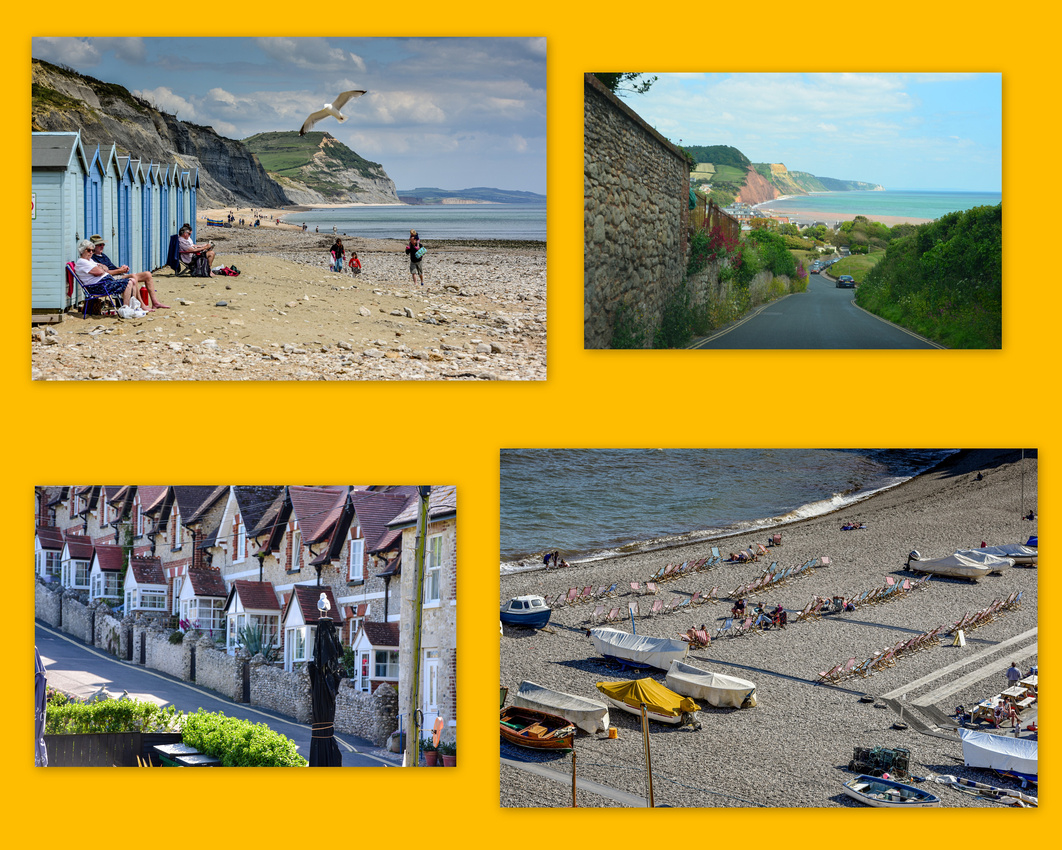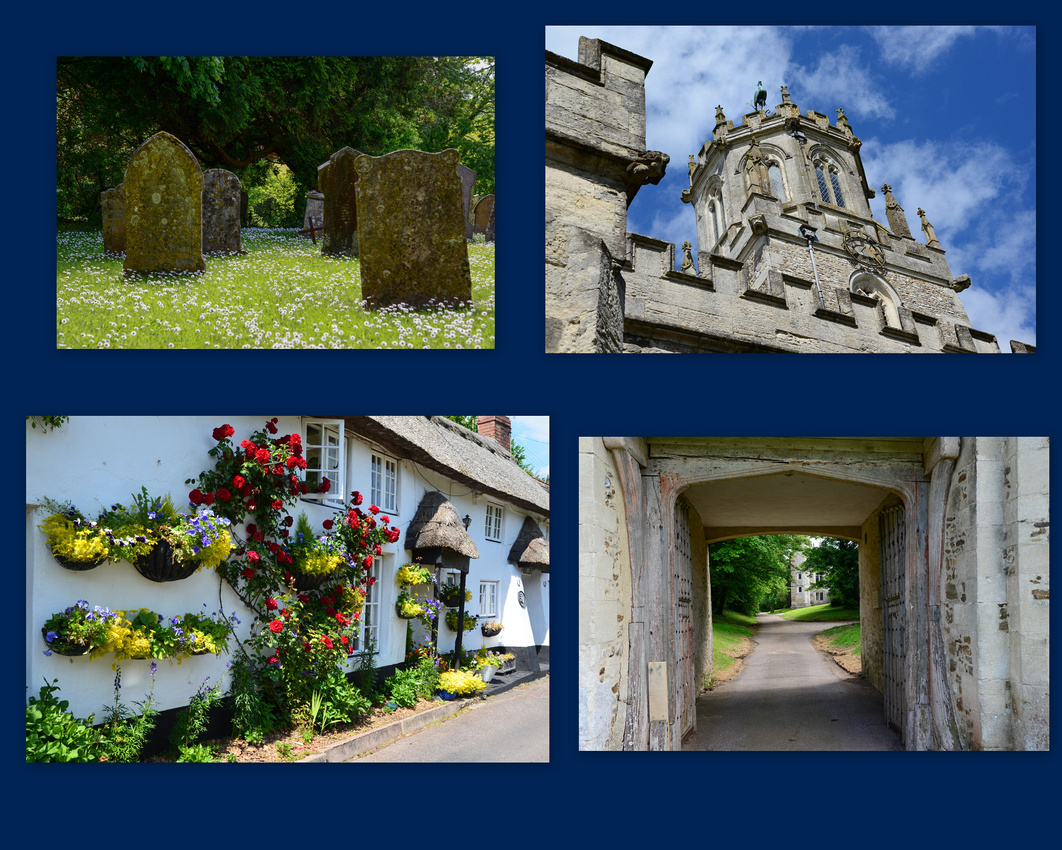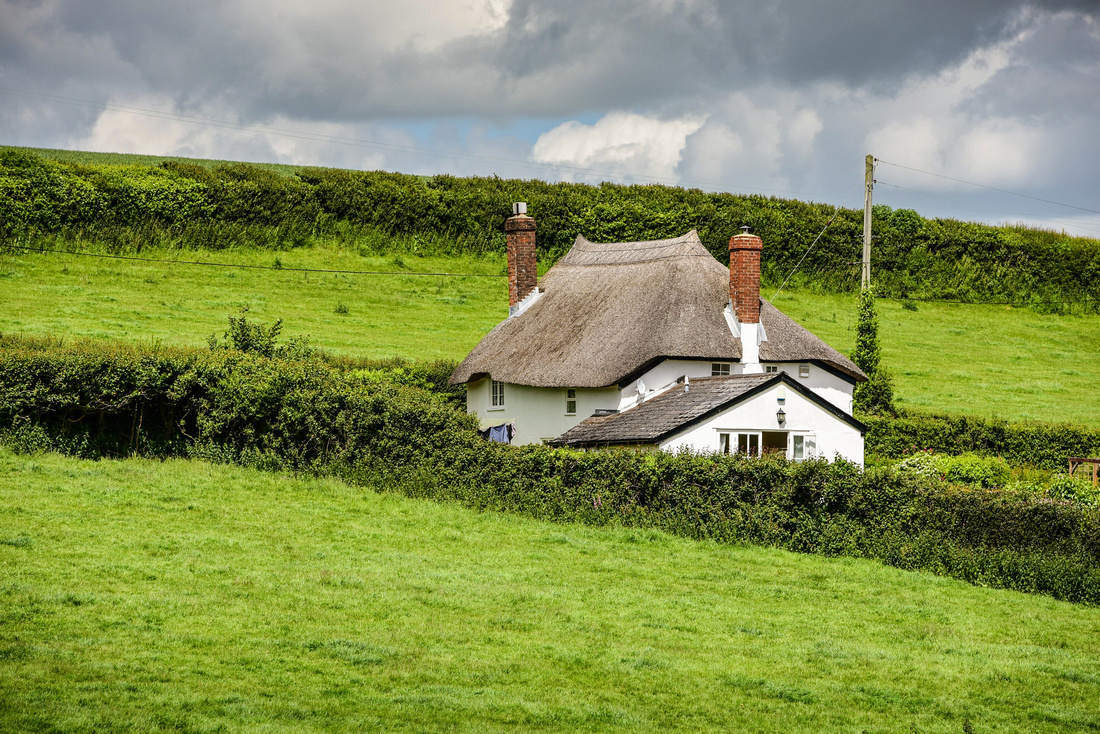Devon

 While in London (see previous blog) we managed to secure our first house sit assignment in Devon and it’s to there that we travelled once we returned from Italy. We were to look after two cats and a granny (the mother of the lady who was going on holiday) in Axemouth, Devon.
While in London (see previous blog) we managed to secure our first house sit assignment in Devon and it’s to there that we travelled once we returned from Italy. We were to look after two cats and a granny (the mother of the lady who was going on holiday) in Axemouth, Devon.
We caught a train down to Southhampton, hired a car (expensive in the UK) and drove to Axemouth, surprised at how much traffic there is in the countryside.
Axemouth is a small village next to the Axe estuary that flows into the Channel at the larger town of Seaton. The weather while we there, late May into June, was generally cloudy and chilly. A couple of local houses.

 During our time there we got the opportunity to see the area and travelled both along the coast and inland. The coast from Axemouth to Studland Bay, Dorset to the east is known as the Jurassic Coast, a World Heritage site of sedimentary cliffs and important fossil sites. We visited the small coastal towns of Beer and Lyme Regis as well.
During our time there we got the opportunity to see the area and travelled both along the coast and inland. The coast from Axemouth to Studland Bay, Dorset to the east is known as the Jurassic Coast, a World Heritage site of sedimentary cliffs and important fossil sites. We visited the small coastal towns of Beer and Lyme Regis as well.



 One of the well-known sites is the Durdle Door, a natural limestone arch near Lulworth in Dorset. We parked in Lulworth, (the councils sure know how to charge for parking!) and walked the 1.5 km's to the arch together with a cheerful school holiday crowd. Took my first fall of our travels – skidding on loose grit on a slope (luckily the camera survived!). I noticed a patriotic sunbather!
One of the well-known sites is the Durdle Door, a natural limestone arch near Lulworth in Dorset. We parked in Lulworth, (the councils sure know how to charge for parking!) and walked the 1.5 km's to the arch together with a cheerful school holiday crowd. Took my first fall of our travels – skidding on loose grit on a slope (luckily the camera survived!). I noticed a patriotic sunbather!








The spectacular West Bay cliffs were the backdrop for the BBC drama Broadchurch. While we were wandering around the harbour I noticed a girl throwing a crab pot into the water then, full of the joys of spring, skipping along the harbour wall to her grandmother where she pulled up another pot.






Inland we found iconic British rolling hills, bluebells scattered in the green grass, foxgloves, winding streets and …...lots of cars. Some of the lanes in the country are so narrow that the hedges brush the sides of a single car.









 There were a couple of bird hides alongside the estuary and I spent an hour filming shelducks as they ducked and dived over the water. Pheasants occasionally pranced across the road.
There were a couple of bird hides alongside the estuary and I spent an hour filming shelducks as they ducked and dived over the water. Pheasants occasionally pranced across the road.



 A highlight of our three weeks was watching a re-enactment of the Monmouth Rebellion in a small inland town called Colyton a few miles inland. Colyton is a archetypical Devon town with small winding historical streets in the center, spreading out and becoming more modern. The signs were even recognising us ancient tourists! During the rebellion celebrations (see below), we explored the local tannery.
A highlight of our three weeks was watching a re-enactment of the Monmouth Rebellion in a small inland town called Colyton a few miles inland. Colyton is a archetypical Devon town with small winding historical streets in the center, spreading out and becoming more modern. The signs were even recognising us ancient tourists! During the rebellion celebrations (see below), we explored the local tannery.










The rebellion, 330 years earlier, was an attempt by James Scott, 1st Duke of Monmouth.to overthrow James II, the Duke of York who had become King of England, Scotland, and Ireland. Both adults and children dressed up and took part in the simulations and festivities. You obviously need a mobile phone to conduct a successful rebellion and Jen ended up in the stocks for her troubles.
















On our introduction to living in England we observed that the big supermarkets are on a par with or at least better than ours but very expensive if you convert to dollars, but apparently not doing well while the smaller shops are struggling because of the supermarkets! Churches too are struggling, either closing and being renovated as homes or in some cases cafes are being added in an attempt to help pay for the expensive maintenance of these beautiful old buildings.
From here we travelled to Jersey (see the next blog).